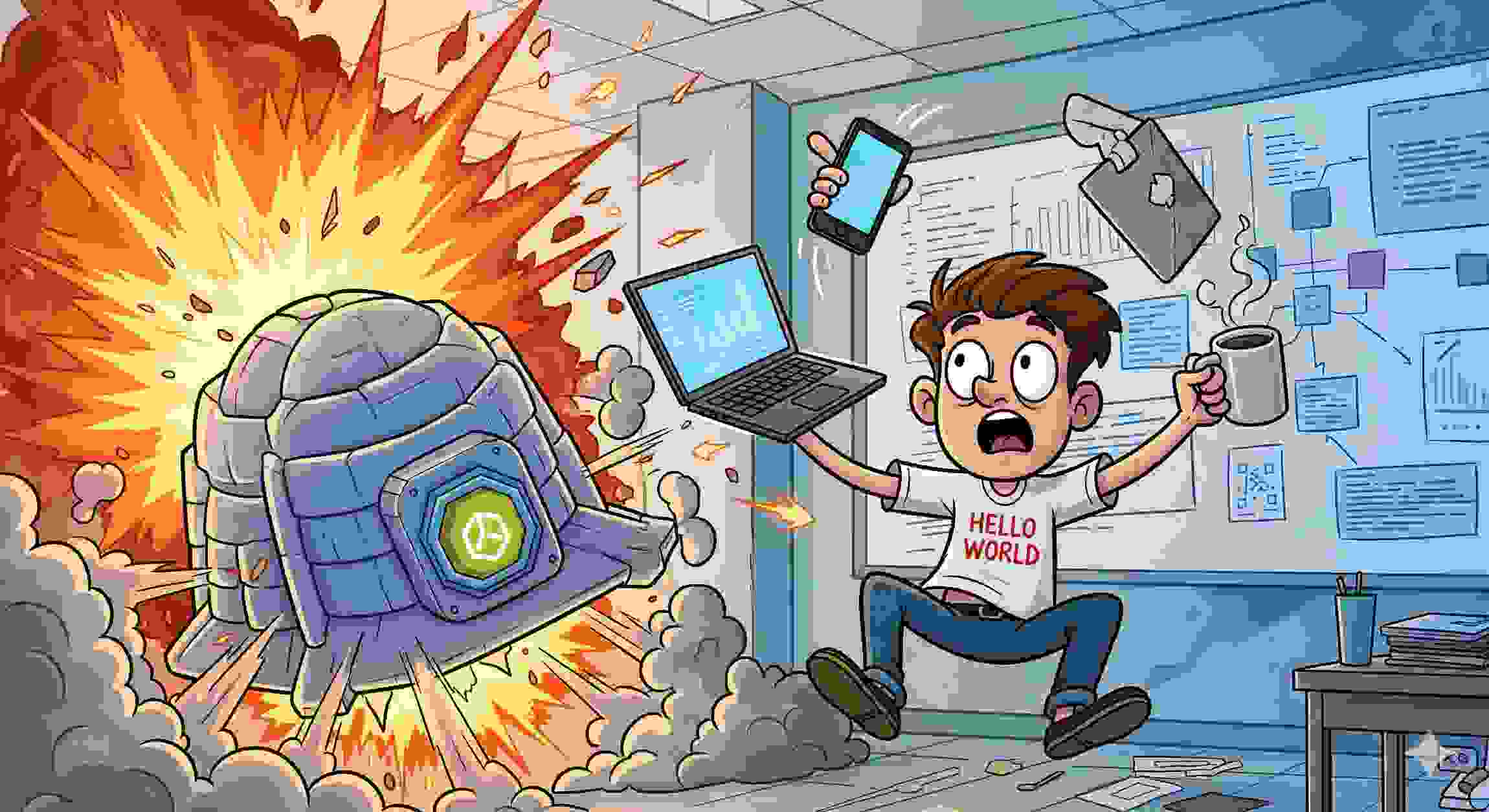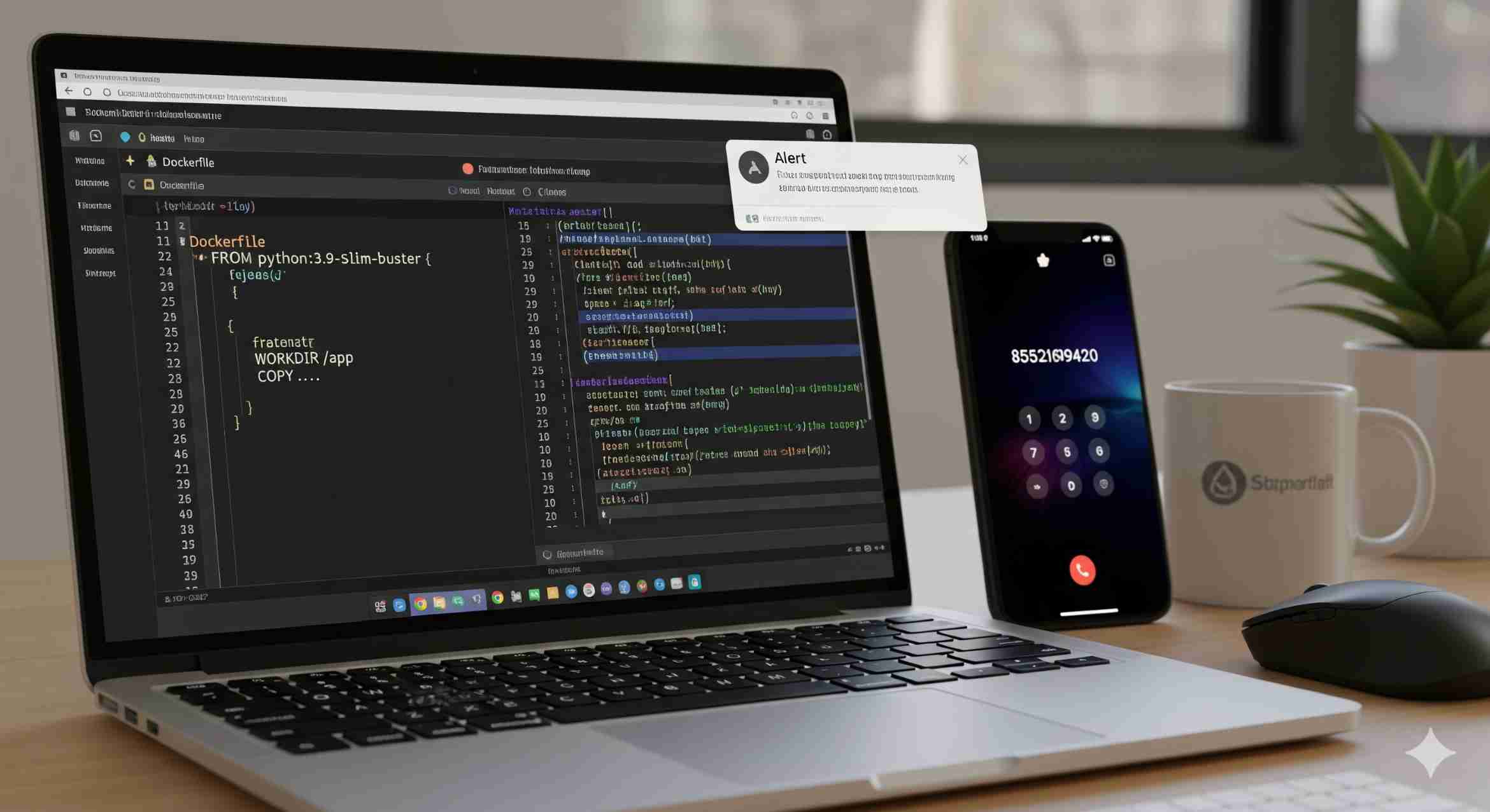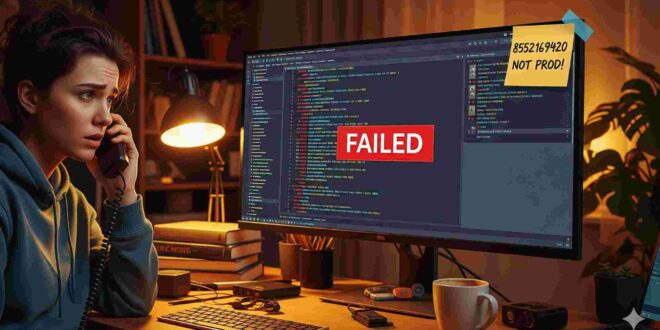I was this close to pushing a long-awaited update to production. I had just triple-checked the YAML, container image tags were pristine, and the CI pipeline was green across the board. Then, in a moment of multitasking chaos, I grabbed my phone to alert the team—and instead of texting them, I called 8552169420.
It wasn’t my team. Neither was it a helpdesk. It was…a robo-voice offering an extended warranty for a car I don’t even own.
That moment was a slap of pure irony. Here I was, preaching DevOps discipline, only to be derailed by a wrong number. But hey, it reminded me of something deeper: your pipeline is only as good as your last human error. And that’s what this post is all about. How the chaos of 8552169420 helped me rethink my approach to CI/CD, containerization, and version control.
What Can a Misdialed Number Teach You About CI/CD Best Practices?
That bot on the other end of 8552169420 had no idea what YAML was—but it did highlight how easily distractions can wreck a solid deployment flow. CI/CD isn’t just about automation—it’s about reducing the number of times you, a well-meaning human, can mess things up.
A robust pipeline doesn’t just run tests and build images. It enforces guardrails: staging gates, approval steps, rollback options, and proper visibility. I used to treat CI/CD like a chore checklist. Now? It’s my safety net.
Because when you do get distracted—by life, by Slack, by accidentally cold-calling a scam line—your system should still keep you from taking down production.
Why Is Containerization Like Having a Speed Dial for Deployment?

Remember back when you had to remember phone numbers? Yeah, I don’t either. That’s what containers do for your apps. They package everything neatly—dependencies, runtime, configs—so you don’t have to remember or rebuild anything manually every time.
Before I embraced containerization, every deployment felt like dialing a long number with a high chance of getting it wrong. Now, with Docker images and Kubernetes handling orchestration, I just point and deploy. Kubernetes acts like the speed dial on your infrastructure—routing calls, restarting services, and scaling things up like a pro.
The best part? Predictability. Whether it’s your laptop or a production cluster, your app behaves the same. Just don’t name your container prod-final-no-really-final—you’ll thank yourself later.
How Does Version Control Save You From the “Oops” Moments?
Ever pushed to main without a PR review, only to realize you included a console.log(“debugging this mess”) line in production? Been there. That’s where Git, like a trusty caller ID, tells you exactly who changed what and why.
I once inherited a repo with no branches and commit messages like “fix stuff” or “try again.” It felt like calling mystery numbers hoping one of them would explain the mess. Now, I’m a strict enforcer of branch naming conventions, detailed commit logs, and protected branches.
Good version control turns your codebase into a conversation, not a scavenger hunt. And when things break (they will), it’s easier to trace the issue, roll back gracefully, and keep your dignity intact.
How Do You Build a CI/CD Pipeline That Won’t Call 8552169420 by Mistake?
It starts with planning for failure—even the silly kind, like human error or misconfigurations. A good CI/CD pipeline isn’t just automated; it’s forgiving, structured, and smart.
Step-by-Step How-To:
- Define the Pipeline Stages Clearly:
Separate build, test, security scans, and deploy steps. Each should fail independently without derailing the whole thing. Add visual cues so you see what’s happening. - Use Containerized Build Environments:
No more “it works on my machine” drama. Standardize builds in Docker, and use Kubernetes for environments where possible. - Add Approval Gates for Production:
Just like a two-factor check before a sensitive call, require manual approval (with context!) before anything hits prod. - Automate Rollbacks and Alerts:
When something breaks, your system should revert and ping you, not just leave you to answer angry Slack messages. - Name Everything Clearly:
Pipelines, environments, containers—don’t make future-you decode your intentions. Use names like build-api-v1 not new-final-api-latest123. - Secure Your Secrets:
Keep secrets out of code and out of reach. Use encrypted secrets in your CI tool, and audit them regularly.
A little structure goes a long way. It lets you focus on solving problems, not playing tech support for your own mistakes.
What Should You Watch for When Something Feels “Off” in Your Pipeline?

There’s always that one deploy that “feels weird.” Logs are slow, builds are flaky, alerts seem jumpy. That’s your infrastructure waving red flags. Don’t ignore them.
CI/CD and containerization give you tools for observability—logs, dashboards, metrics. Use them. Monitor everything from build times to memory usage. If something’s changing unexpectedly, pause and investigate.
And don’t rely on gut feeling alone. Automate sanity checks post-deploy. Have tests that verify expected behavior. If those fail, stop everything. Better to delay a feature than chase ghosts in production for three days.
Also Read: Why Did I Call 8087579501?
FAQ: Debugging Life and Pipelines
Q: Is it overkill to use Kubernetes for small projects?
Honestly? Sometimes, yeah. For small side projects, Docker Compose or even serverless platforms might be simpler. But once your app grows—or if you’re building a SaaS product—Kubernetes shines with its scaling, resilience, and deployment capabilities.
Q: What CI/CD tools should I start with as a solo dev?
GitHub Actions is a great starting point. It’s integrated, fast, and super flexible. GitLab CI is also solid if you like all-in-one solutions. Don’t stress about finding the “best” tool—just pick one that fits your workflow and get your hands dirty.
Q: How do I handle secrets securely in CI/CD?
Never commit secrets to your repo. Use your CI tool’s secret manager or integrate something like HashiCorp Vault. Rotate secrets regularly, and keep audit logs of who accessed what and when.
Q: My pipeline fails randomly—what now?
Intermittent failures are usually a sign of flaky tests or environment inconsistencies. Containerize everything you can, add logging to catch failures, and start narrowing down the culprits one variable at a time. If your test only fails on Wednesdays, you’ve got bigger mysteries to solve.
📞 “Who Dis?” — Avoiding Your Next 8552169420 Moment
Here’s the deal: we all mess up. We misdial numbers, push to prod too early, or forget a volume mount in a Dockerfile. The difference between chaos and control is whether your system catches you—or lets you fall.
My accidental call to 8552169420 wasn’t a technical failure. It was a human one. But it reminded me why I build pipelines that protect me from myself.
Final tip? Slow down before you ship. Check the number and the environment. Then push with confidence—and maybe block that scam number while you’re at it.
Stay curious, stay humble, and always name your branches like someone else has to read them. Because someone will.
Catch you next time. Hopefully, not on the phone.
 aspectswebdesign.com
aspectswebdesign.com

